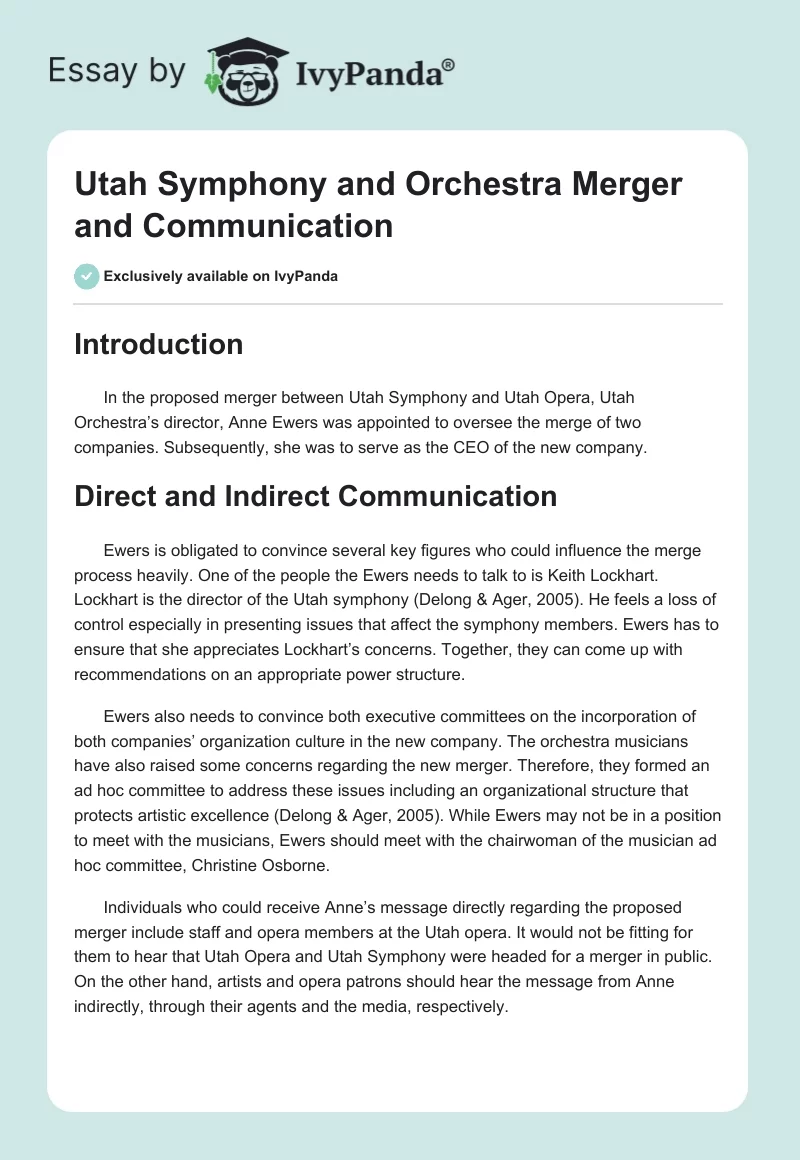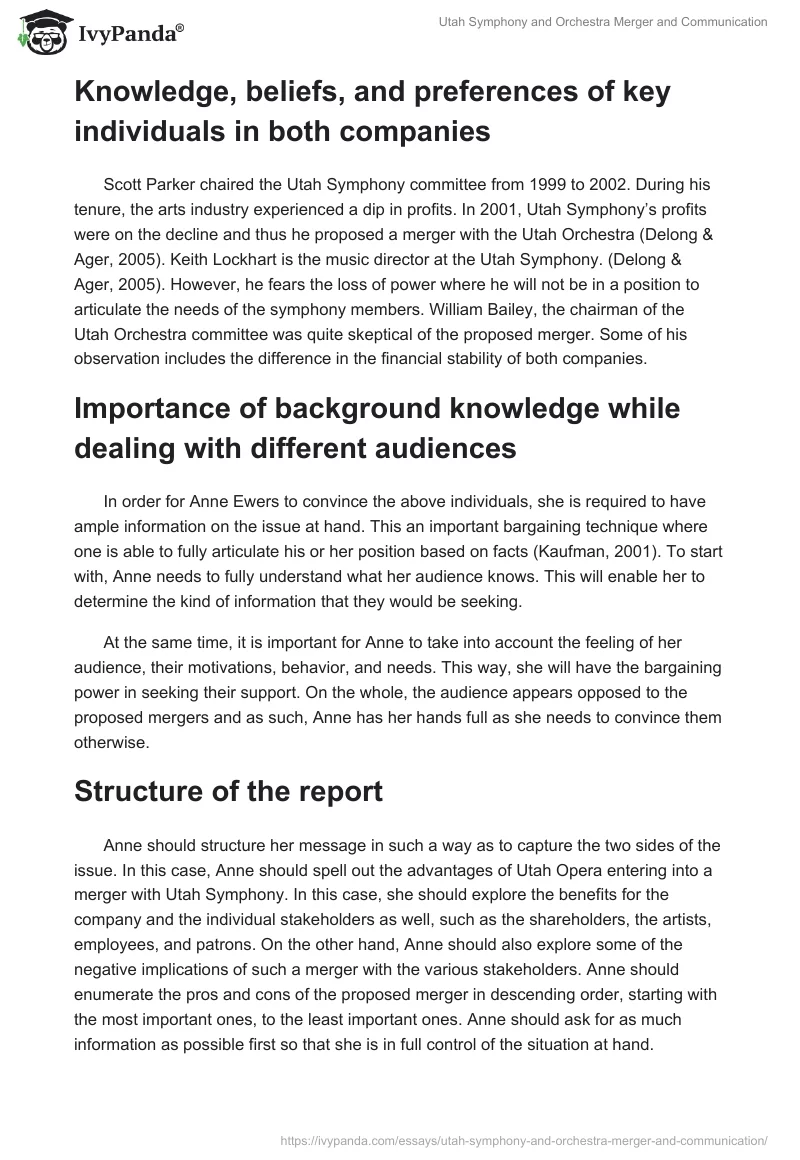Introduction
In the proposed merger between Utah Symphony and Utah Opera, Utah Orchestra’s director, Anne Ewers was appointed to oversee the merge of two companies. Subsequently, she was to serve as the CEO of the new company.
Direct and Indirect Communication
Ewers is obligated to convince several key figures who could influence the merge process heavily. One of the people the Ewers needs to talk to is Keith Lockhart. Lockhart is the director of the Utah symphony (Delong & Ager, 2005). He feels a loss of control especially in presenting issues that affect the symphony members. Ewers has to ensure that she appreciates Lockhart’s concerns. Together, they can come up with recommendations on an appropriate power structure.
Ewers also needs to convince both executive committees on the incorporation of both companies’ organization culture in the new company. The orchestra musicians have also raised some concerns regarding the new merger. Therefore, they formed an ad hoc committee to address these issues including an organizational structure that protects artistic excellence (Delong & Ager, 2005). While Ewers may not be in a position to meet with the musicians, Ewers should meet with the chairwoman of the musician ad hoc committee, Christine Osborne.
Individuals who could receive Anne’s message directly regarding the proposed merger include staff and opera members at the Utah opera. It would not be fitting for them to hear that Utah Opera and Utah Symphony were headed for a merger in public. On the other hand, artists and opera patrons should hear the message from Anne indirectly, through their agents and the media, respectively.
Knowledge, beliefs, and preferences of key individuals in both companies
Scott Parker chaired the Utah Symphony committee from 1999 to 2002. During his tenure, the arts industry experienced a dip in profits. In 2001, Utah Symphony’s profits were on the decline and thus he proposed a merger with the Utah Orchestra (Delong & Ager, 2005). Keith Lockhart is the music director at the Utah Symphony. (Delong & Ager, 2005). However, he fears the loss of power where he will not be in a position to articulate the needs of the symphony members. William Bailey, the chairman of the Utah Orchestra committee was quite skeptical of the proposed merger. Some of his observation includes the difference in the financial stability of both companies.
Importance of background knowledge while dealing with different audiences
In order for Anne Ewers to convince the above individuals, she is required to have ample information on the issue at hand. This an important bargaining technique where one is able to fully articulate his or her position based on facts (Kaufman, 2001). To start with, Anne needs to fully understand what her audience knows. This will enable her to determine the kind of information that they would be seeking.
At the same time, it is important for Anne to take into account the feeling of her audience, their motivations, behavior, and needs. This way, she will have the bargaining power in seeking their support. On the whole, the audience appears opposed to the proposed mergers and as such, Anne has her hands full as she needs to convince them otherwise.
Structure of the report
Anne should structure her message in such a way as to capture the two sides of the issue. In this case, Anne should spell out the advantages of Utah Opera entering into a merger with Utah Symphony. In this case, she should explore the benefits for the company and the individual stakeholders as well, such as the shareholders, the artists, employees, and patrons. On the other hand, Anne should also explore some of the negative implications of such a merger with the various stakeholders. Anne should enumerate the pros and cons of the proposed merger in descending order, starting with the most important ones, to the least important ones. Anne should ask for as much information as possible first so that she is in full control of the situation at hand.
Reference List
Delong T, J., & Ager, D.L. (2005). Utah Symphony and Utah Opera. Web.
Kaufman, B.E. (2001). Human Resources and Industrial Resources: Commonalities and Differences. Human Resource Management Review, 11(4), 339-374.




